My main interests are in experimental subatomic physics, statistically
sound precision measurements, fundamental symmetries and tests of the
standard model. I am also interested in developing new detectors, and
have worked on the large volume Time Projection Chambers (TPC)s for
the near detector of T2K. My research program is working toward
further understanding the properties of fundamental particles. In
particular I am involved in neutrino oscillation studies with the
Tokai to Kamioka experiment in Japan, planning for a next generation
mega-ton scale water cerenkov detector (Hyper-Kamiokande) and studies
of the neutron electric dipole moment using ultra cold neutrons.
WCTE
The Water Cherenkov Text Experiment (WCTE) at CERN in Geneva, Switzerland
is a beam experiment designed to measure particle interactions in water Cherenkov detectors. Below is an event display of a 360 MeV/c pion in the detector.
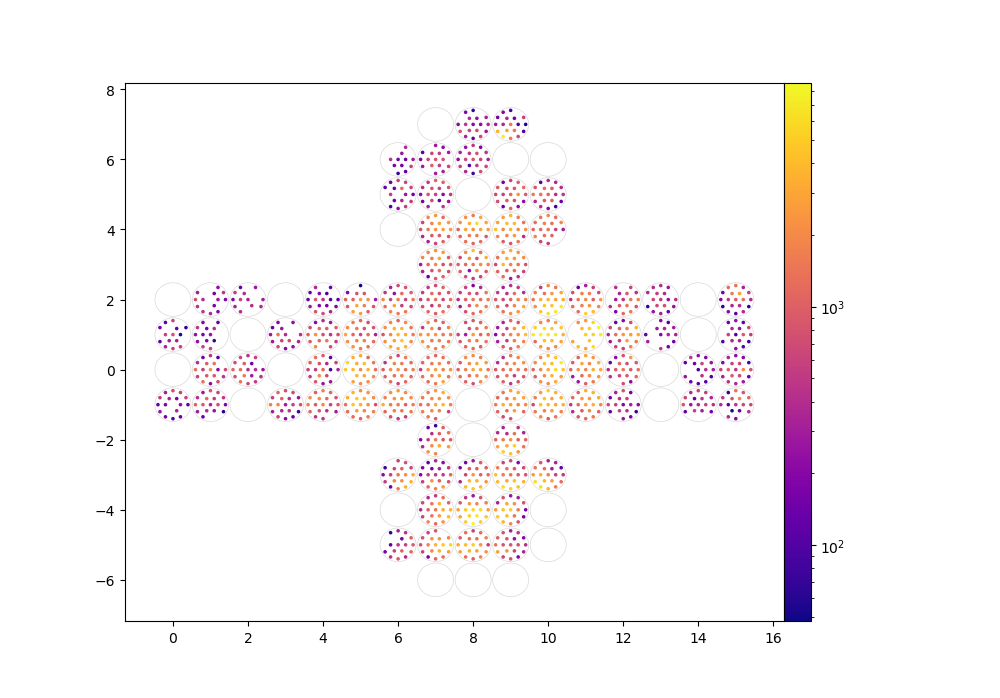
T2K
The T2K experiment is a long baseline neutrino oscillation experiment,
that produces a high intensity muon-neutrino beam at Tokai, Japan.
The high intensity beam is detected at a complex of near detectors at
280m from the production target, and at 295km by the Super-Kamiokande
detector. A unique feature of the experiment is that the neutrino
beam is intentionally observed at 2.5 degrees off axis from its
production to reduce the intrinsic electron neutrino background, and
to select the muon neutrino energy so that the baseline, L/E,
maximizes the oscillation from muon-neutrino to electron-neutrino to
give greater sensitivity in measuring the final neutrino mixing
parameters. I am a researcher in the T2K collaboration
working on the near detector at 280m, the time projection chambers,
and the inputs to the oscillation analysis.
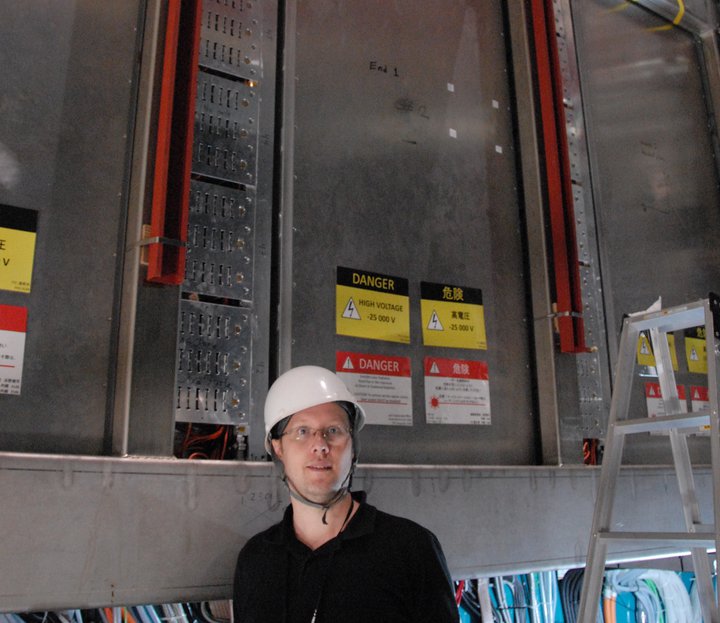
Ultra Cold Neutrons
A new high intensity source of Ultra Cold Neutrons is being built at
TRIUMF, with help from Japan. Unlike the neutrons inside of a nucleus
of an atom, ultra cold neutrons are free to move around and have
interesting properties. They are trapped by Earth's gravitational
field, they bounce off walls, and can be stored in magnetic bottles.
A motivation for producing a high intensity neutron source is that an
observation of a permanent electric dipole moment (EDM) of the neutron
would imply new physics such as a T-violating process. Another
motivation is that if neutrons have an EDM, it would help explain the
high value of the baryon-to-photon ratio of the universe that is not
accommodated by the standard model parametrization of CP violation. I
am the simulation coordinator, with the goals of using the simulation
to maximize the experimental sensitivity to a possible neutron EDM. A
key part of the neutron EDM experiments is being able to count the
number of neutrons that are being measured. As the number of neutrons
is increasing, the counting rate needs to be increased as well. To
help solve this problem a collaboration with TRIUMF is underway to
characterize a new neutron detector technology using a neutron capture
coating on scintillator, read out by photomultiplier tube.

Sudbury Neutrino Observatory (Completed Experiment)
My First PostDoc was on the Sudbury Neutrino Observatory (SNO), which
was the heavy water Cerenkov detector
that solved
the solar neutrino problem and made measurements of the solar
sector neutrino oscillation parameters. I developed a Markov-Chain
Monte-Carlo parameter estimation that was used for the NCD phase
analysis of SNO data.
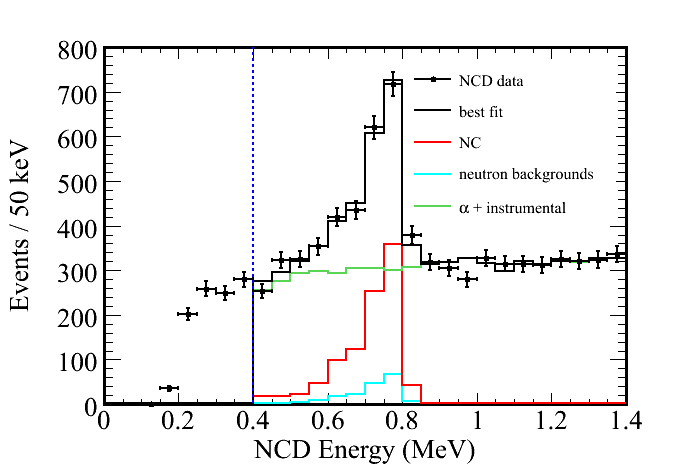
TWIST (Completed Experiment)
My PhD was with the TRIUMF Weak Interaction Symmetry
Test (TWIST), which was a high precision measurement of the decay
positron spectrum from the decay of highly polarized muons. My thesis
was on the first measurement of the parameter describing the asymmetry
of the decay, that is sensitive to the mass of a possible right handed
W boson in the MSSM model.
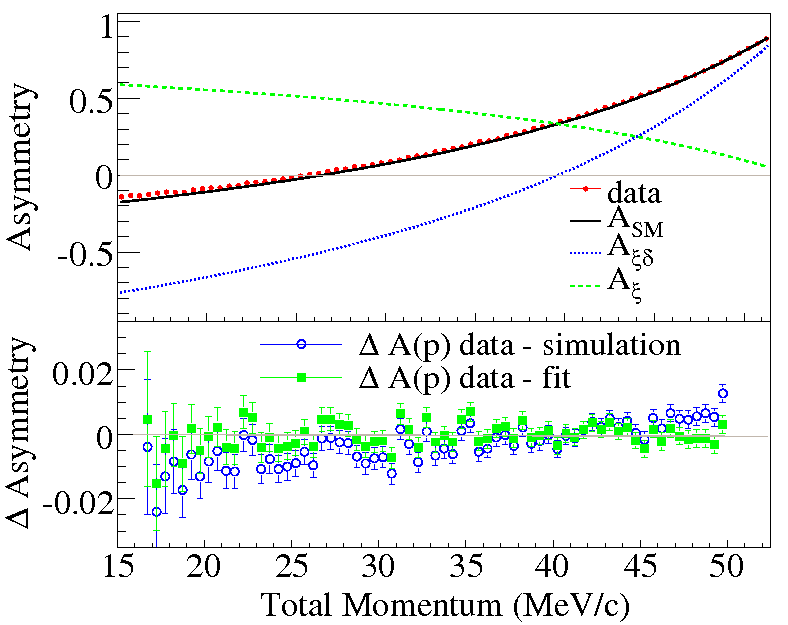
|
|
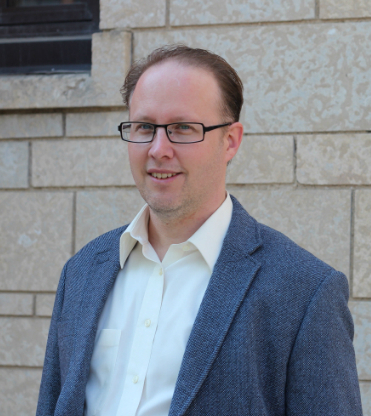
Contact
Blair A. Jamieson
Department of Physics
Lockhart Hall (3L24)
University of Winnipeg
515 Portage Avenue
Winnipeg, MB R3B 2E9
Canada
Email. bl.jamieson (at) uwinnipeg.ca
Tel. +1 (204) 786-9216
Fax. +1 (204) 774-4134
About me
2011 - present
Assistant Professor
University of Winnipeg
2008 - 2011
Post doctoral research fellow
T2K Experiment
2006 - 2008
Post doctoral research fellow
SNO Experiment
2001 - 2006
DPhil (Experimental Particle Physics)
University of British Columbia
1999 - 2000
Bachelor of Education
University of British Columbia
1997 - 1998
Master of Physics (1st Class Hons.)
University of British Columbia
1991 - 1997
BASc (Eng. Phys.)
University of British Columbia
|